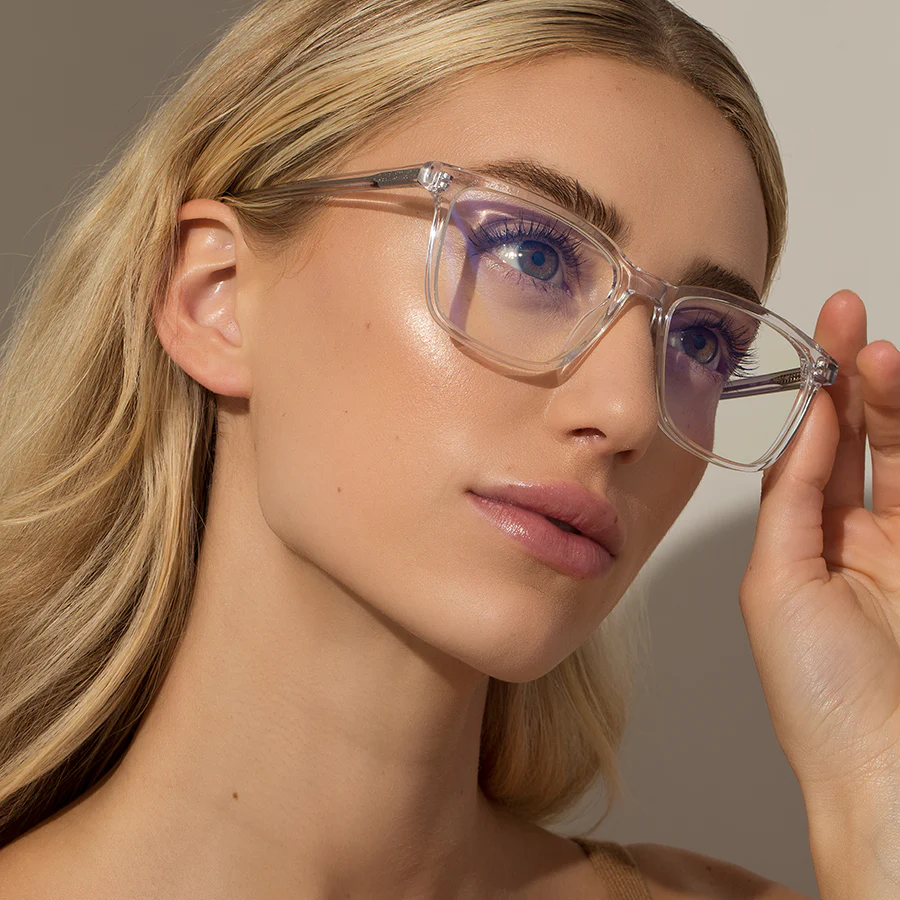
The Complete Guide to Glass Frame
The Evolution of Glass Frames: From Necessity to Fashion Statement
Glass frames have come a long way since their inception. Early spectacles emerged in 13th century Italy. Monks crafted these primitive eyepieces from beryl crystals. The Renaissance period saw the rise of more sophisticated designs. Craftsmen began using glass lenses in the 16th century. This innovation improved optical clarity significantly. The industrial revolution brought mass production techniques. Frames became more affordable and accessible to the general public. The 20th century witnessed a explosion of frame styles. Designers began treating glasses as fashion accessories.
Materials expanded beyond basic metals to include plastics and composites. Celebrity influence played a significant role in popularizing certain styles. The 21st century ushered in an era of high-tech frames. Smart glasses and augmented reality lenses represent the cutting edge. Today, glass frames blend function with fashion seamlessly. They serve as both vision correction tools and personal style statements. The industry continues to evolve, driven by technological advancements and changing fashion trends.
Top 10 Benefits of Choosing Glass Frames
- Superior optical clarity
- Scratch-resistant surface
- Durability and longevity
- Hypoallergenic properties
- Easy to clean and maintain
- Versatile style options
- Environmentally friendly
- UV protection capabilities
- Resistance to chemical damage
- Customization potential
Glass frames offer numerous advantages for eyewear enthusiasts. Superior optical clarity stands out as a primary benefit. Glass lenses provide crisp, distortion-free vision. The scratch-resistant surface ensures long-lasting clarity. This durability translates to extended longevity for the frames. Glass proves hypoallergenic, making it ideal for sensitive skin. Cleaning and maintaining glass frames requires minimal effort. A wide range of style options caters to diverse tastes.
Glass production often involves recycled materials, contributing to environmental sustainability. Many glass lenses offer built-in UV protection. This feature safeguards eyes from harmful solar radiation. Glass resists damage from common chemicals, maintaining its appearance. Customization options allow for personalized prescriptions and tints. These benefits make glass frames a compelling choice for many wearers.
Choosing the Right Glass Frame for Your Face Shape
- Oval Face: Most frame styles suit this shape
- Round Face: Angular frames create contrast
- Square Face: Rounded frames soften angular features
- Heart-shaped Face: Frames wider at the top balance proportions
- Diamond Face: Cat-eye or oval frames complement cheekbones
- Rectangular Face: Rounded or square frames add width
- Triangle Face: Top-heavy frames balance a narrow forehead
Selecting the right glass frame enhances facial features significantly. Oval faces enjoy the most versatility in frame choices. Round faces benefit from angular frames that add definition. Square faces look best with rounded frames that soften sharp angles. Heart-shaped faces achieve balance with frames wider at the top. Diamond faces shine with cat-eye or oval frames that highlight cheekbones. Rectangular faces gain width from rounded or square frames.
Triangle faces balance their proportions with top-heavy frame designs. Consider frame size in relation to facial features. Frames should align with eyebrows and not extend beyond the widest part of the face. The color of the frame should complement skin tone and hair color. Bold colors make a statement, while neutral tones offer versatility. Experiment with different styles to find the most flattering option. Many opticians offer virtual try-on tools for convenience. Remember that comfort remains crucial alongside style considerations.
The Science Behind Glass Frame Materials
Glass frame materials rely on advanced scientific principles. Borosilicate glass offers exceptional durability and heat resistance. Its low thermal expansion coefficient prevents cracking under temperature changes. Crown glass provides a high refractive index. This property ensures clearer vision and reduced distortion. Flint glass suits high-power prescriptions due to its optical dispersion characteristics. Photochromic glass contains silver halide crystals. These crystals darken in response to UV light, providing adaptive tinting.
Polycarbonate, while not glass, offers impact resistance for active wearers. Its lightweight nature ensures comfort during extended wear. Trivex combines the best properties of glass and polycarbonate. It offers durability, optical clarity, and lightweight comfort. High-index glass allows for thinner lenses in strong prescriptions. This material reduces the “coke bottle” effect in high-power lenses. Each material offers unique benefits for different wearer needs. Understanding these properties helps in making informed frame choices.

Maintaining and Caring for Your Glass Frames
Proper care extends the life and appearance of glass frames. Establish a daily cleaning routine using a microfiber cloth. Remove dust and smudges gently to maintain clarity. Store frames in a protective case when not in use. This habit prevents scratches and accidental damage. Handle frames with clean, dry hands to avoid transferring oils. Always use both hands when putting on or removing glasses. Schedule regular professional maintenance checks. Opticians can adjust fit and replace worn parts. Address common issues promptly to prevent further damage.
Loose screws, misaligned frames, or scratched lenses require attention. Familiarize yourself with replacement parts for your specific frame model. Some repairs can be done at home with the right tools and knowledge. Avoid extreme temperatures that can affect frame materials. Remove glasses before applying makeup or hair products. These substances can damage lens coatings over time. Rinse frames with lukewarm water if exposed to salt water or chlorine. Dry thoroughly to prevent corrosion of metal components. With proper care, glass frames can last for many years. Regular maintenance ensures optimal performance and appearance.
Innovative Trends in Glass Frame Technology
Glass frame technology continues to advance rapidly. Smart glasses integrate digital displays into everyday eyewear. These devices offer hands-free access to information and communication. Augmented reality lenses overlay digital content onto the real world. This technology enhances user experiences in various fields. 3D-printing enables the creation of custom frames tailored to individual face shapes. This process ensures perfect fit and unique designs. Eco-friendly materials address environmental concerns in frame production. Biodegradable options reduce the industry’s carbon footprint. Shape-memory alloys allow frames to flex and return to their original shape.
This feature enhances durability and comfort for wearers. Advanced photochromic lenses change tint more rapidly than ever before. Users enjoy seamless transitions between indoor and outdoor environments. Electrochromic glasses offer user-controlled tint adjustments. This technology provides on-demand light filtration. These innovations represent the cutting edge of eyewear technology. They promise to revolutionize how we interact with our glasses and the world around us.

The Future of Glass Frames: Predictions and Possibilities
The future of glass frames holds exciting possibilities. Integration with wearable health technology seems inevitable. Frames may monitor vital signs and provide real-time health data. Self-adjusting frames could use sensors to maintain optimal fit. This technology would eliminate the need for manual adjustments. Advanced material composites promise unprecedented strength and flexibility. These materials could revolutionize frame durability and design options. Virtual try-on experiences will become more sophisticated and widely available. Augmented reality will allow users to visualize frames on their faces accurately.
Prescription-changing lenses could adjust to vision needs in real-time. This technology would eliminate the need for multiple pairs of glasses. Sustainable production methods will gain prominence in frame manufacturing. Recycled materials and eco-friendly processes will become industry standards. Enhanced blue light protection will address growing concerns about digital eye strain. Frames may incorporate advanced filtration technologies to protect eye health. These predictions represent potential directions for the eyewear industry. As technology advances, glass frames will continue to evolve in exciting ways. The future promises eyewear that not only corrects vision but enhances overall quality of life.



